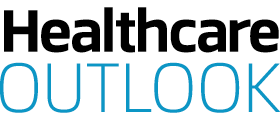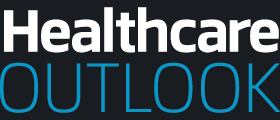Missed appointments, known as ‘did not attends’, remain a deep-rooted problem for the NHS, with thousands of appointments wasted each year. Richard Evans, CTO for Cinos, discusses how technology can address patient engagement and deliver better healthcare.
REVOLUTIONISING NHS APPOINTMENT SYSTEMS
With over 103 million outpatient appointments booked in 2021/22, approximately 7.6 percent ended in ‘did not attends’ (DNAs), equating to an average of 650,000 missed opportunities per month.
At a cost of approximately £120 each to the NHS, this equates to almost £1bn. The financial strain from these missed appointments is profound, costing the service dearly in terms of lost revenue and increased pressure on an already stretched system.
REASONS WHY DNAS OCCUR
There are many driving factors leading to DNAs. A patient may have simply forgotten about their appointment, they may feel better and no longer need a consultation, life may get in the way on the day, a patient might be unaware of an appointment in the first place, or the person can’t get time off work to attend.
In most circumstances, a simple reminder or an easy facility to cancel or reschedule could alleviate a potential DNA. Current reminders include letters, SMS, and phone calls that have shown to reduce DNAs by up to 80 percent.
These results can only be improved by making communication with patients a two-way process, giving them the ability to acknowledge or confirm an appointment and to make contact easily with the NHS should they then need to cancel or reschedule.

ADDRESSING DNAS WITH TECHNOLOGY
Communications Platforms as a Service (CPaaS), such Cisco’s Webex Connect, are at the forefront of tackling DNAs by enhancing patient engagement and improving two-way communication efficiency.
CPaaS technology allows NHS trusts to send patients personalised appointment reminders, confirmations, and follow-up messages through multiple channels such as WhatsApp, SMS, email, and social media. This proactive engagement helps ensure that individuals are well-informed and less likely to miss their appointments.
By reminding patients and providing easy options for rescheduling or cancelling, CPaaS solutions help minimise the occurrence of DNAs. With fewer missed appointments, clinics can reallocate resources to reduce waiting times and address backlogs, enhancing service delivery and patient care.
Furthermore, engaging with individuals through their preferred communication channels demonstrates a commitment to patient-centric care, fostering trust and satisfaction.
EMPOWERING THE PATIENT
One of the key features of CPaaS is its ability to facilitate two-way communication channels, empowering patients to confirm, acknowledge, or reschedule their appointments with ease. This interaction not only improves engagement but also streamlines the cancellation process, allowing for better management of clinic schedules.
This approach also plays a crucial role in addressing health inequalities by offering digital engagement options for those who might feel uncomfortable making phone calls or have difficulty visiting clinics in person. By tailoring communications to meet the unique needs of different demographic groups, healthcare providers can ensure more equitable access to services.
DATA-DRIVEN INSIGHTS FOR BETTER HEALTHCARE DELIVERY
Two-way communication with patients also plays a crucial role in reducing health inequalities by providing valuable insights into the unique challenges faced by specific demographic groups.
Firstly, it allows healthcare trusts to proactively offer services to the public, such as digital engagement for non-English speakers who might not feel comfortable making a phone call. Or allowing someone struggling to get time off work to simply reschedule from their phone.
By analysing communication patterns and engagement levels across different patient populations, healthcare providers can identify disparities in access to care and tailor interventions to address these gaps. This targeted approach ensures that healthcare services are more equitable and accessible to all, regardless of socioeconomic status or geographic location.
By using data analytics and insights provided by CPaaS solutions, trusts can predict demand more accurately. In partnership with companies like Deep Medical, which uses artificial intelligence to predict DNAs with high accuracy, CPaaS platforms can enhance operational efficiencies and improve overall healthcare outcomes. This foresight enables healthcare providers to optimise appointment scheduling, allocate resources efficiently, and reduce the likelihood of overruns.
As a result, clinics operate more smoothly with fewer delays and disruptions, ultimately enhancing the patient experience and staff satisfaction.
As NHS continues to tackle the elective care backlog, the integration of CPaaS solutions is proving indispensable. By reducing DNAs and enhancing the patient experience, the software not only supports the NHS’s operational goals but also contributes to a more sustainable healthcare system.
NHS trusts can significantly reduce the risk of DNAs occurring in the first place by reminding patients of upcoming appointments and offering convenient options for rescheduling or cancelling. Two-way communication enables patients to confirm their attendance or notify the clinic of any changes, leading to higher appointment attendance rates and fewer wasted slots.
The financial impact of DNAs on healthcare organisations cannot be overstated. Each missed appointment represents lost revenue and strains on already stretched resources. By implementing CPaaS solutions, NHS trusts can protect against DNAs happening in the first place, helping to minimise the financial and staff burden, leading to significant cost savings and operational efficiency gains.
In turn, valuable capacity within clinics is freed up. With fewer missed appointments, healthcare providers can reallocate resources to clear backlogs and reduce waiting times for patients. This ensures that those in need of care receive timely access to services, improving overall patient satisfaction and outcomes.























